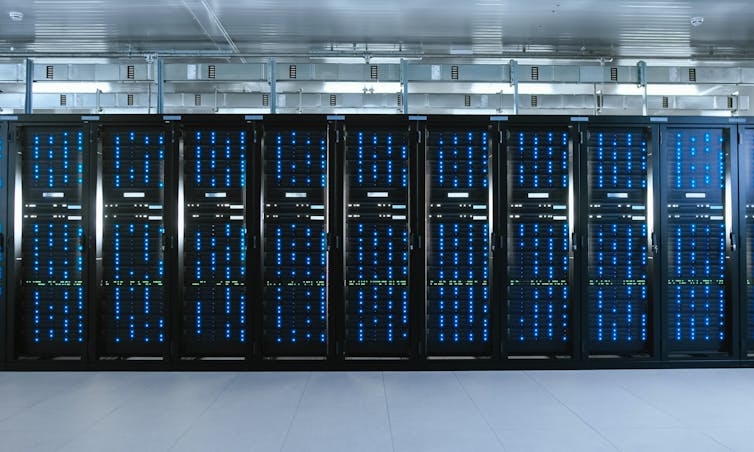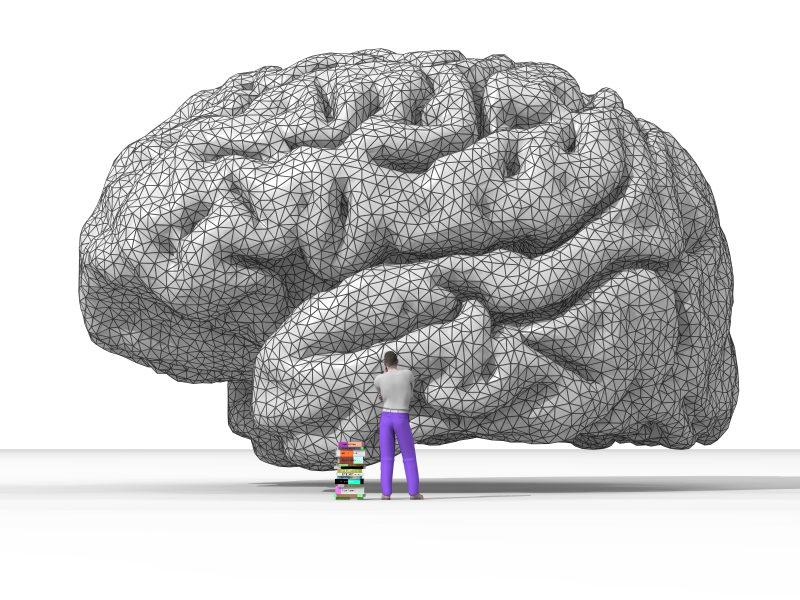Artificial intelligence (AI) is curating your social media feed and giving you directions to the train station. It’s also throwing the fossil fuel industry a lifeline.
Three of the biggest tech companies, Microsoft, Google and Meta, have reported ballooning greenhouse gas emissions since 2020. Data centres packed with servers running AI programs day and night are largely to blame.
AI models consume a lot of electricity, and the World Economic Forum estimated in April that the computer power dedicated to AI is doubling every 100 days. Powering this boom in the US, where many AI tech pioneers are based, have been revitalised gas power plants once slated for closure.

This roundup of The Conversation’s climate coverage comes from our award-winning weekly climate action newsletter. Every Wednesday, The Conversation’s environment editor writes Imagine, a short email that goes a little deeper into just one climate issue. Join the 35,000+ readers who’ve subscribed.
First, what actually is AI?
AI sucks (power and water)
“At its core, the kind of AI we are seeing in consumer products today identifies patterns,” say Sandra Peter and Kai Riemer, computing experts at the University of Sydney.
“Unlike traditional coding, where developers explicitly program how a system works, AI ‘learns’ these patterns from vast datasets, enabling it to perform tasks.”
While AI programs are being “trained” and fed huge sums of data over several weeks and months, data processors run 24/7. Once up to speed, an AI can use 33 times more energy to complete a function than traditional software.

In fact, a single query to an AI-powered chatbot can consume ten times as much energy as a traditional Google search according to Gordon Noble and Fiona Berry, sustainability researchers at the University of Technology Sydney.
“This enormous demand for energy translates into surges in carbon emissions and water use, and may place further stress on electricity grids already strained by climate change,” they say.
Data centres are thirsty as well as power-hungry: millions of litres of water have to be pumped to keep them cool.
These enormous server warehouses are vying with people for an increasing share of power and water, a situation which could prove deadly during a heatwave or drought.
A dubious solution
Experts only have a partial picture of AI’s resource diet, Noble and Berry argue. One survey showed that just 5% of sustainability professionals in Australia believed data centre operators provided detailed information about their environmental impact.
Its fierce appetite aside, AI is feted as a Swiss army knife of fixes for our ailing planet.
AI’s ability to process mountains of data means it could spot the warning signs of a building storm or flood and track how the environment is changing say Ehsan Noroozinejad and Seyedali Mirjalili, AI experts at Western Sydney University and Torrens University Australia respectively.
“For example, it can reportedly measure changes in icebergs 10,000 times faster than a human can,” they add.
Kirk Chang and Alina Vaduva, management experts at the University of East London, highlight hopes that AI might make simulations of Earth’s climate more accurate.
AI could closely monitor an entire electricity grid and coordinate generators so that they waste less energy while meeting demand. AI models could identify materials for sorting in a recycling facility and analyse air pollution to pinpoint its sources. On farms, AI systems could track weather and soil conditions to ensure crops receive only as much water as they need.
However, AI’s claims to efficiency are sadly undermined by a well-worn problem. When humanity makes an activity more efficient through innovation, the energy or resource savings are generally ploughed into expanding that activity or others.
“The convenience of an autonomous vehicle may increase people’s travel and in a worst-case scenario, double the amount of energy used for transport,” says Felippa Amanta, a PhD candidate in digital technologies and climate change.
And while there is value in imagining what AI might help us do, it is important to recognise what it is already doing. An investigation by Scientific American found AI was deployed in oil extraction in 2019 to substantially increase production. Elsewhere, targeted advertising that uses AI creates demand for material goods. More mass-produced stuff, more emissions.
Does our answer to climate change need to be high-tech?
During a climate disaster like Hurricane Helene, which claimed more than 150 lives in the south-eastern US over the weekend, a reliable power supply is often the first thing to go. AI can be of little help in these circumstances.
Low-tech solutions to life’s problems are generally more resilient and low carbon. Indeed, most of them – like fruit walls, that used renewable energy to grow Mediterranean produce in England as early as the Middle Ages – have been around for a very long time.
“‘Low-tech’ does not mean a return to medieval ways of living. But it does demand more discernment in our choice of technologies – and consideration of their disadvantages,” says Chris McMahon, an engineering expert at the University of Bristol.
“What’s more, low-tech solutions often focus on conviviality. This involves encouraging social connections, for example through communal music or dance, rather than fostering the hyper-individualism encouraged by resource-hungry digital devices.”
Jack Marley, Environment + Energy Editor, The Conversation
This article is republished from The Conversation under a Creative Commons license. Read the original article.











